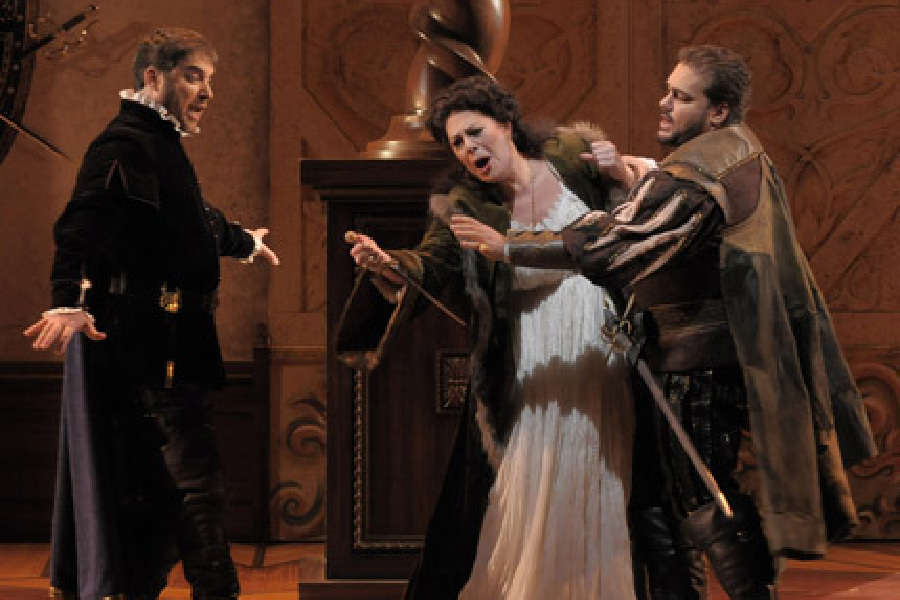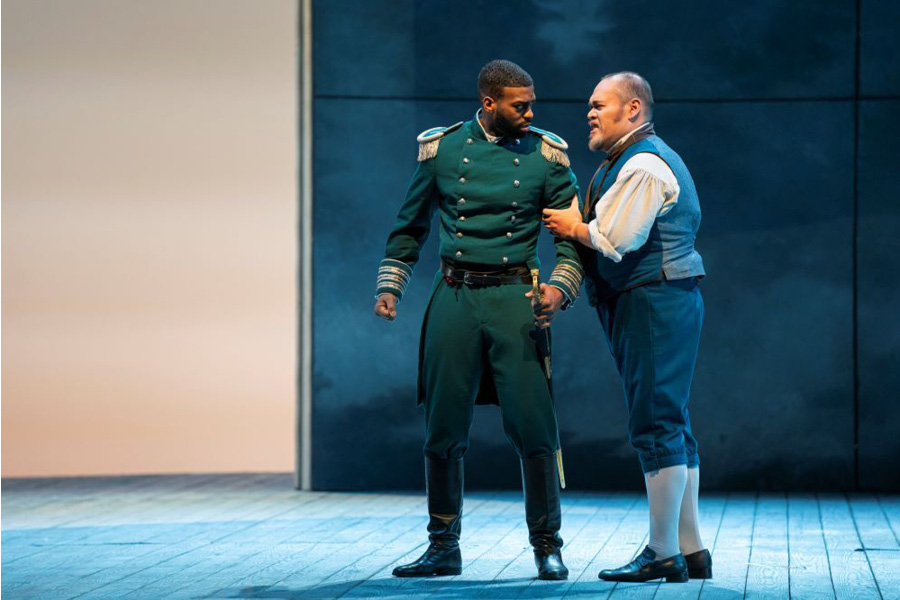March 19, 2021
Beauty and power
The thrills of early Verdi
Our operagoing life generally includes only a fraction of Giuseppe Verdi’s stage works. Rigoletto, Il trovatore, La traviata, and Aida may be the most popular Verdi operas worldwide, but there’s so much more to discover in Verdi’s music!
Over the next several seasons, Lyric will be featuring Verdi's early work, a period in this composer’s incomparable career that has long been neglected by opera companies internationally. Yes, Nabucco and Macbeth do come along now and again onstage, but not often enough for audiences to become truly familiar with them. And what about the other dozen operas that make up what we think of as “early Verdi”? They all offer nonstop excitement, both musically and dramatically.

Carlo (Boaz Daniel, l.) and Ernani (Salvatore Licitra, r.) restrain Elvira (Sondra Radvanovksy) in Lyric's 2009/10 production of Ernani.
With the first revelation of his gifts as an opera composer (Oberto, conte di San Bonifacio, 1839), Verdi began a decade of work that he’d later describe as his “galley years.” It was constant work—not just composing 14 operas, but also supervising each opera’s world-premiere production, while also dealing with his demanding publisher’s concerns and requests regarding each score. It was work, too, that provided Verdi with desperately needed distraction, after the deaths of his wife and two infant children in less than two years.
The early Verdi works share particular strengths that set them apart from anything else in Italian repertoire at the time. Above all, what we get from these operas is pure, unadulterated energy. When you listen to Lady Macbeth explode with overwhelming ambition, or Nabucco’s Zaccaria proclaiming that the Israelites will conquer Babylon, you’re hearing a kind of power and aggressiveness from an operatic voice that must have left Verdi’s audiences speechless and awestruck. And early Verdi isn’t just about solo singers—what stupendous choruses we hear in all these operas! Whether it’s Attila’s warriors and refugees, I Lombardi’s crusaders and pilgrims, or I masnadieri’s gang of robbers, Verdi was rapidly learning how to blend a massive ensemble of voices to give it terrific color and thrust.

Wurm (Soloman Howard) is confronted by Miller (Quinn Kelsey), Luisa Miller at Lyric, 2019/20 Season.
In nearly all of the early operas, Verdi brought larger-than-life characters to the stage. Think of Abigaille in Nabucco—born a slave, but nevertheless able to usurp the throne of Babylon from King Nebuchadnezzar. And what about those three fiery title roles—power-mad Attila, mighty yet pitiful Macbeth, and radiant Joan of Arc (in Verdi’s seventh opera, Giovanna d’Arco)? These and so many other richly textured protagonists are fabulous gifts to singers, provided they own the vocal equipment to do the music justice.
If you assume early Verdi needs spectacular vocal technique, you’re right. Huge range, flexibility, endless breath—it’s all essential. If singers have all that, they can handle not only the fiery aggressiveness of these operas, but also the beauty. Already in these first years of his operatic career, Verdi could create the most ravishing melodies imaginable. Whether you listen to the baritone Francesco’s lament for his imprisoned son in I due Foscari, the soprano Elvira’s desperate longing for rescue in Ernani, or the lovestruck tenor Oronte’s song of praise for the woman he loves in I Lombardi, you’re hearing melodies from a composer who knew how to flatter a voice. These arias and so many others are glorious experiences for anyone who loves Italian opera—and isn’t that all of us?

Abigaile (Tatina Serjan) seizes the throne in Lyric's 2015/16 Season production of Nabucco
Photo credits: Todd Rosenberg, Cory Weaver, Lyric Opera of Chicago
